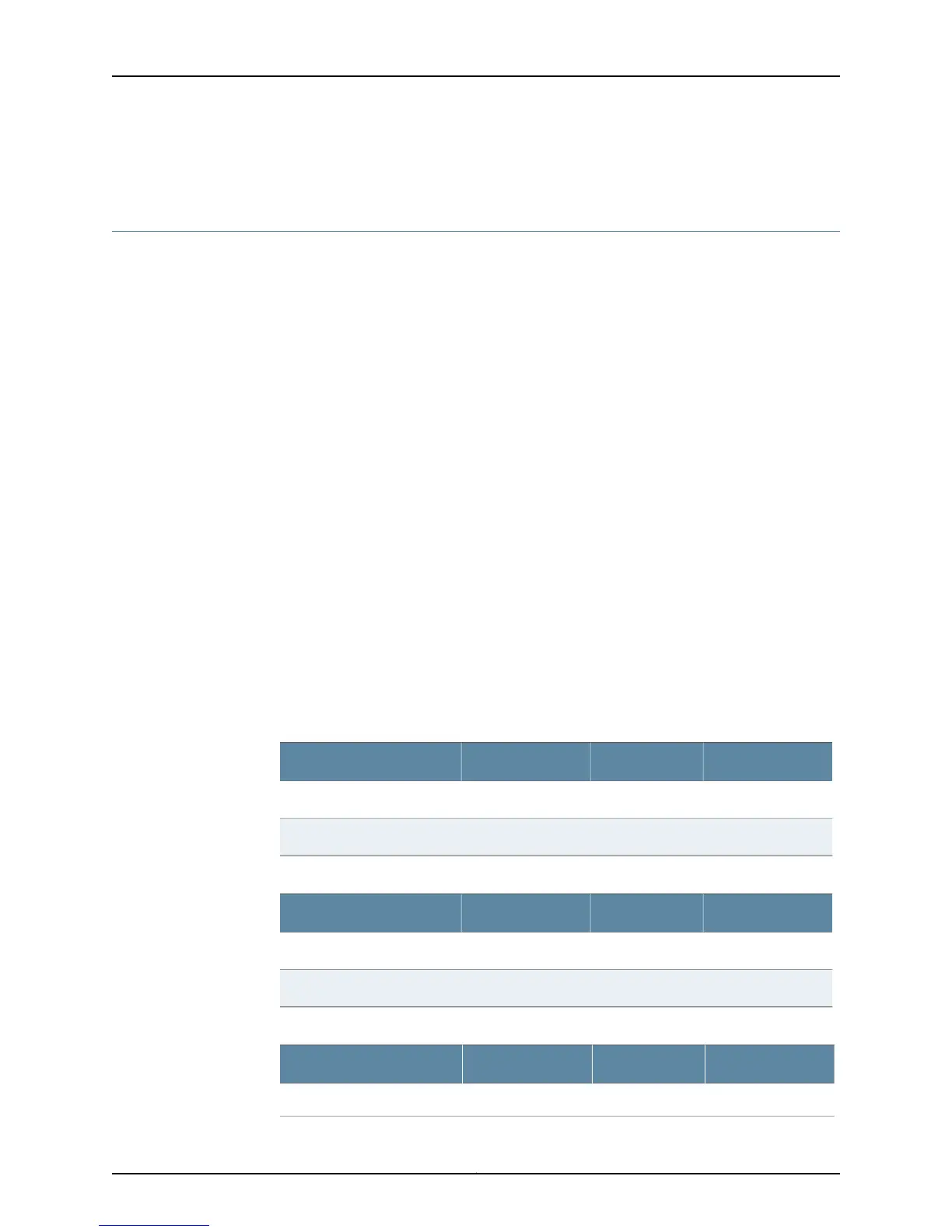Each PE router in the sample topology has a total of two network interfaces and two
VPLS virtual core interfaces configured, one interface of each type per VPLS instance.
VPLS and Transparent Bridging Overview
A single VPLS instance is analogous to a distributed learning bridge (also known as a
bridge group) used for transparent bridging, and performs similar functions. In effect, a
VPLS instance is a new or existing bridge group that has additional VPLS attributes
configured.
A bridge group is a collection of bridge interfaces stacked on Ethernet layer 2 interfaces
to form a broadcast domain. Similarly, a VPLS instance is a collection of network
interfaces stacked on Ethernet layer 2 interfaces that transmits packets between the
router, or VE device, and the CE device located at the edge of the customer’s network.
In addition, the VPLS virtual core interface enables a VPLS instance to forward traffic
not only between bridge interfaces, like a bridge group, but also between a bridge
(network) interface and the service provider core.
Like a bridge group, each VPLS instance maintains its own set of forwarding tables and
filters that enables it to learn the network topology by examining the media access control
(MAC) source address of every incoming packet. The VPLS instance then creates an
entry in its forwarding table that includes the MAC address and associated network
interface where the packet was received. For traffic on the VPLS virtual core interface,
the VPLS instance captures additional information that includes an outgoing MPLS label
used to reach the remote site and an incoming MPLS label used to process traffic received
from the remote site.
Table 108 on page 576 through Table 111 on page 577 represent the forwarding tables on
PE 1 and PE 2 for the sample VPLS topology illustrated in Figure 128 on page 574.
Table 108: VPLS Forwarding Table on PE 1 for VPLS A
Received LabelOutgoing LabelMAC AddressInterface
––1a1a.1a1a.1a1aFast Ethernet 3/1
324183a3a.3a3a.3a3aVPLS virtual core interface
Table 109: VPLS Forwarding Table on PE 1 for VPLS B
Received LabelOutgoing LabelMAC AddressInterface
––2b2b.2b2b.2b2bBridged Ethernet 2/0.12
526254b4b.4b4b.4b4bVPLS virtual core interface
Table 110: VPLS Forwarding Table on PE 2 for VPLS A
Received LabelOutgoing LabelMAC AddressInterface
––3a3a.3a3a.3a3aFast Ethernet 3/5
Copyright © 2010, Juniper Networks, Inc.576
JunosE 11.2.x BGP and MPLS Configuration Guide

